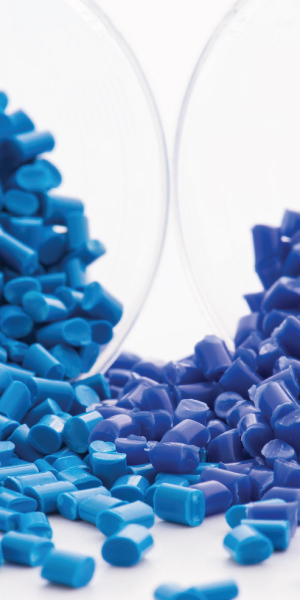
Choosing the Right Plastic for Your Next Project Part 1
More than 85,000 commercial alternatives for plastic materials are recorded in materials databases, and, inside those, 45 polymer families can be ordered into two classes: thermosets and thermoplastics.
Narrowing down that broad rundown of materials can appear like an assignment that’s too big, so we’ve arranged this rundown in two parts that framework the advantages and uses of some of our most used materials. By picking the correct material, you can enhance the shape, fit, and capacity of your parts.

ABS (Acrylonitrile Butadiene Styrene)
Advantages: ABS is a hard, impact safe plastic that is broadly utilized over a wide range of ventures. It has low shrinkage and high dimensional stability, and it has great protection from acids and bases. ABS is a decent decision for handheld devices. It’s likewise moderately cheap.
Applications: aesthetic parts, handheld gadgets, casings, and moldings for electrical tools, remote controls, PCs, phone parts.
Contemplations: ABS-formed parts will indicate knit lines and can have sink and voids in thick regions. Diminishment of sink can be had by changing to an ABS/PC-mixed material. ABS additionally bonds well to PC parts.
ABS/PC
Advantages: ABS/PC consolidates the quality and heat protection of polycarbonate with the adaptability of ABS. ABS/PC likewise gives enhanced handling amid injection molding, expanded durability and dimensional stability, higher heat protection than ABS, and better low temperature impact protection than PC.
Applications: These mixes are ordinarily utilized as a part of the car, electronic, and broadcast communications businesses among others applications.
Contemplations: ABS/PC materials intermittently can limit thick molding concerns found in ABS or PC materials when molded alone. It is often utilized when improved mechanical properties are required when utilizing ABS or when a lower cost PC is required.
PC (Polycarbonate)
Advantages: PC is solid and to a great degree impact safe with low shrinkage and great dimensional stability. It’s a transparent plastic that is accessible in optically clear grades. PC has great heat protection and acknowledges high aesthetic coatings as well.
Applications: Lenses, indoor and open air lighting, phone cases, electrical parts, therapeutic gadgets, impenetrable glass.
Contemplations: There can be sensitivities in thick areas of parts that may cause voids, air pockets and sink, and PC parts have poor chemical protection. An ABS/PC blend is a good alternative for opaque parts with these issues, and Acrylic (outlined below) is another option for parts with thick geometries.
PA or PPA (Aliphatic Polyamides)
Advantages: There are many sorts of PPAs, or nylons (4, 6/6, 6, 6/10, 6/12, 12, and so forth.), each with its own particular favorable circumstances. For the most part, nylon parts give top strength and high-temperature quality, particularly when strengthened, and are chemical solvent safe, aside from exceptionally strong acids and bases.
Applications: thin-walled projects, brushes, spools, gears and bearings, screws, pump parts, under-hood segments, cameras.
Contemplations: Nylon can be prone to warping due to non-linear shrink, so remember that while picking a particular sort of nylon. In the event that your part will be presented to dampness, you ought to consider maintaining a strategic distance from nylon as it is a hygroscopic material that will retain dampness, causing dimensional and possibly structure issues.
PMMA (Polymethyl Methacrylate)
Advantages: PMMA, otherwise known as acrylic, has great optical properties, a polished look and is scratch safe. Acrylic likewise has low shrinkage and has less sink in geometries with thin and think segments.
Applications: light pipes, lenses, light shades, optical filaments, signs.
Contemplations: Acrylic can be weak and along these lines more defenseless to pressure breaking. PC is a decent option, if necessary. Draft is constantly required in acrylic parts because of its weakness, and normally double the draft of different materials. Acrylic likewise has poor compound protection.
We don’t want to overwhelm you all at once with too many plastics to think about. Be on the look out for part 2 of this article for more plastics to consider for your next part. And if you have any questions always feel free to call Quality Mold Shop.